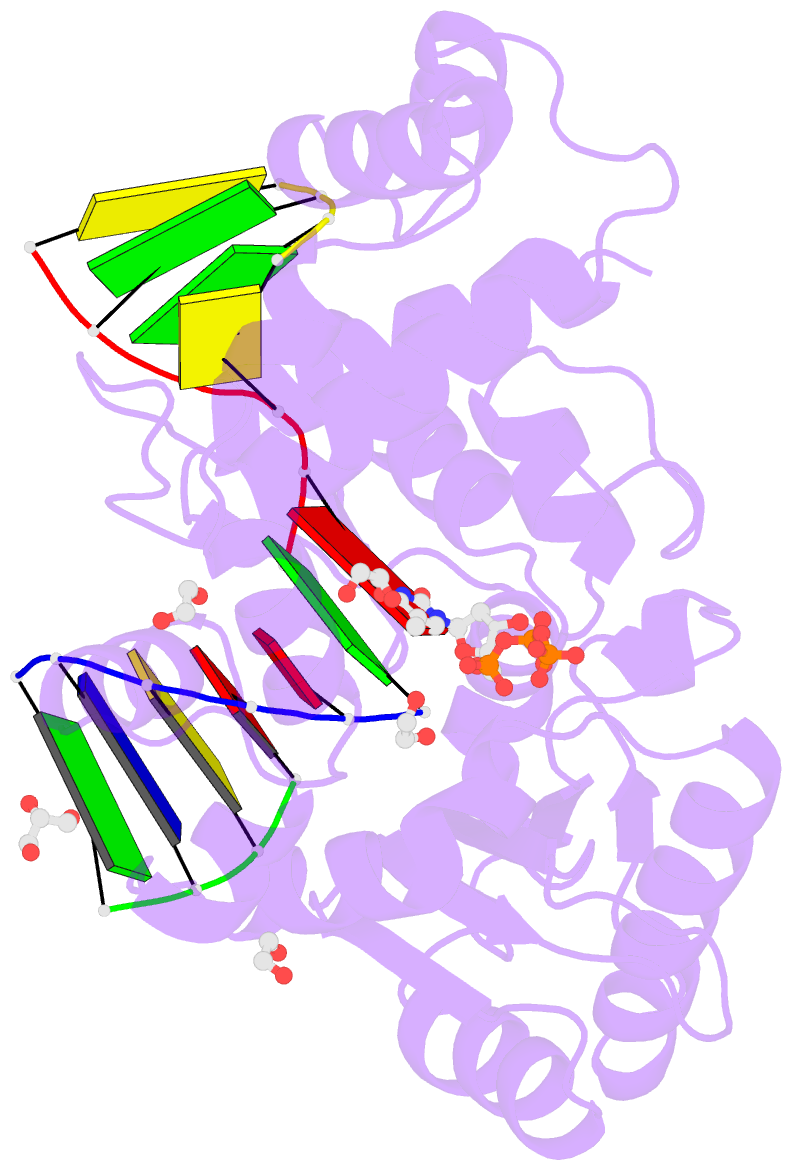Summary information and primary citation
- PDB-id
- 7un7; SNAP-derived features in text and JSON formats;
DNAproDB
- Class
- replication
- Method
- X-ray (2.04 Å)
- Summary
- DNA polymerase lambda in complex with a 1nt microhomology substrate
- Reference
- Chandramouly G, Jamsen J, Borisonnik N, Tyagi M, Calbert ML, Tredinnick T, Ozdemir AY, Kent T, Demidova EV, Arora S, Wilson SH, Pomerantz RT (2023): "Pol lambda promotes microhomology-mediated end-joining." Nat.Struct.Mol.Biol., 30, 107-114. doi: 10.1038/s41594-022-00895-4.
- Abstract
- The double-strand break (DSB) repair pathway called microhomology-mediated end-joining (MMEJ) is thought to be dependent on DNA polymerase theta (Polθ) and occur independently of nonhomologous end-joining (NHEJ) factors. An unresolved question is whether MMEJ is facilitated by a single Polθ-mediated end-joining pathway or consists of additional undiscovered pathways. We find that human X-family Polλ, which functions in NHEJ, additionally exhibits robust MMEJ activity like Polθ. Polλ promotes MMEJ in mammalian cells independently of essential NHEJ factors LIG4/XRCC4 and Polθ, which reveals a distinct Polλ-dependent MMEJ mechanism. X-ray crystallography employing in situ photo-induced DSB formation captured Polλ in the act of stabilizing a microhomology-mediated DNA synapse with incoming nucleotide at 2.0 Å resolution and reveals how Polλ performs replication across a DNA synapse joined by minimal base-pairing. Last, we find that Polλ is semisynthetic lethal with BRCA1 and BRCA2. Together, these studies indicate Polλ MMEJ as a distinct DSB repair mechanism.





